Learn more about the EE-System and research about the technology here: https://eesystem.com Watch "THE REVOLUTION OF HEALING" w/ Jason Shurka and Dr. Sandra Rose Michael here: https://www.youtube.com/watch?v=2bcYs...
|
14 Dec 2022 Jason Shurka - founder of Unifyd.com & Unifyd.tv, speaks about the future of healing, a power humanitarian initiative and the power of the Energy Enhancement System technology. Find and support a UNIFYD Healing location near you here: https://unifydhealing.com/ Learn more about the EE-System and research about the technology here: https://eesystem.com Watch "THE REVOLUTION OF HEALING" w/ Jason Shurka and Dr. Sandra Rose Michael here: https://www.youtube.com/watch?v=2bcYs...
0 Comments
Learn more about opening up a healing center here: https://unifydhealing.com
Sign up to the FREE newsletter for updates regarding the healing network at: https://unifydhealing.com/newsletter This past weekend, TLS encouraged me to go to Las Vegas to interview someone who currently has the power to bring true healing (on all levels) to the entire world. An individual who they approached back in 2011. An individual who has developed a healing technology that may even be more advanced than what many refer to as “MedBed Technology”. A technology that dissolved a 12.5-centimeter cystic fibroid in my aunt’s uterus in a period of only 4 hours. Her name is Dr. Sandra Rose Michael and she is the first person I know of, with the exception of myself, that TLS has agreed to associate with in the public realm. TLS has encouraged me to raise awareness regarding this incredible technology while also finding a way to make this technology accessible to the entire world. Additionally, not only have they welcomed Dr. Michael to publicly share her experiences regarding when the organization approached her in 2011, but they even sent me to Las Vegas to document it! She told me herself that they informed her back in 2011 that they would assist in bringing her technology to the forefront in due time. Well, I guess that time is NOW! MedBed technology here and we are going to make this technology accessible to the entire world, once and for all. We’ve got an entire planet to heal! I ask you all to share this interview FAR & WIDE because that is how we change the world! Through AWARENESS. The revolution of healing is here and I am grateful to be a part of bringing it to the forefront alongside the gracious, Dr. Sandra Rose Michael. ________________________________________________________________________ From Kryon Book Thirteen – The Recalibration of Humanity – Page 202
What is Next? Now we discuss what is new and what is coming, which is different in an esoteric way. You’ve spent all of this time, Human Being, to get to the point where you realize that a high consciousness is a real possibility for the planet. Not all of you see this. Many humans will only see the problems and the drama, but the Old Souls are aware since they have been expecting it. It’s a slow movement toward a planet without war. It’s a slow agreement about new wisdom of the environment and looking for what may be next to accomplish it. The addition of new inventions is the key. You will have new discoveries that will enhance humanity’s ability to have fresh water at any time and very efficient energy so that even in the cold winters, there will be no shortage of power and no issues with the potential of grid loss (there won’t be a need for an electric grid). These are the things we told you that are coming. ~ KRYON through Lee Carroll, the Original Kryon Channel (via [email protected]) P.S. To explore this topic more fully, you can download Kryon's Book Thirteen: Recalibration of Humanity: 2013 Beyond through Kindle. Medical Express, 25 July 2020 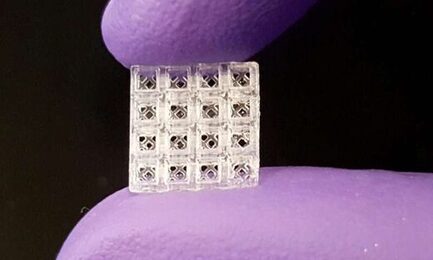 © Oregon Health & Science University Oregon Health & Science University researchers have developed a tiny, 3D-printed technology that can be assembled like Lego blocks and help repair broken bones and soft tissue. Tiny, 3-D-printed bricks have been designed to heal broken bones — and could one day lead to lab-made organs for human transplant.
Inspired by Lego blocks, the small, hollow bricks serve as scaffolding onto which both hard and soft tissue can regrow better than today's standard regeneration methods, according to new research published in Advanced Materials. Each brick is 1.5 millimeters cubed, or roughly the size of a small flea. "Our patent-pending scaffolding is easy to use; it can be stacked together like Legos and placed in thousands of different configurations to match the complexity and size of almost any situation," said Luiz Bertassoni, Ph.D., who led the technology's development and is an associate professor in the OHSU School of Dentistry and an associate professor of biomedical engineering in the OHSU School of Medicine. Bertassoni partnered with colleagues from OHSU, University of Oregon, New York University and Mahidol University in Thailand to develop and evaluate the technology. When stacked together, the microcages are designed to repair broken bones better than today's methods. Orthopaedic surgeons typically repair more complex bone fractures by implanting metal rods or plates to stabilize the bone and then inserting bio-compatible scaffolding materials packed with powders or pastes that promote healing. A unique advantage of this new scaffolding system is that its hollow blocks can be filled with small amounts of gel containing various growth factors that are precisely placed closest to where they are needed. The study found growth factor-filled blocks placed near repaired rat bones led to about three times more blood vessel growth than conventional scaffolding material. "The 3-D-printed microcage technology improves healing by stimulating the right type of cells to grow in the right place, and at the right time," said study co-author Ramesh Subbiah, Ph.D., a postdoctoral scholar in Bertassoni's OHSU lab who specializes in growth factor delivery. "Different growth factors can be placed inside each block, enabling us to more precisely and quickly repair tissue." The small devices are modular and can be assembled to fit into almost any space. When piecing together block segments containing four layers of four-bricks-by-four bricks, the researchers estimate more than 29,000 different configurations can be created. Bertassoni and colleagues also imagine their 3-D-printed technology could be used to heal bones that have to be cut out for cancer treatment, for spinal fusion procedures and to build up weakened jaw bones ahead of a dental implant. And, by changing the composition of the technology's 3-D-printed materials, they envision it could also be used to build or repair soft tissues. With significantly more research, they hope the modular microcage approach could even be used to make organs for transplant. Bertassoni and his team will further explore the microcages' performance in bone repair. They plan to test the technology's ability to repair more complex bone fractures in rats or larger animals. More information: Ramesh Subbiah et al, 3D Printing of Microgel‐Loaded Modular Microcages as Instructive Scaffolds for Tissue Engineering, Advanced Materials (2020). DOI: 10.1002/adma.202001736 A long time ago in a galaxy far, far away.... a star exploded. Light from the supernova reached Earth in May 2019 following a journey of 110 million years across the cosmos. Astronomers saw it--a tiny bloom of light on the edge of lenticular galaxy NGC5353--and immediately began to monitor its light curve. Then this happened: Bill Williams of the Chiefland Astronomy Village in Florida created the composite image. "It shows my photo of the supernova on May 15th (left), one week before the launch of SpaceX's Starlink satellites, alongside a similar photo taken at the Lowell Observatory after the launch (right)", explains Williams. The difference is, Starlink ruined the Lowell Observatory image.
SN2019ein is a Type 1a supernova. It happened when matter from one star fell onto another--a nearby white dwarf, pushing the mass of the dwarf over the threshold for a supernova explosion. This special kind of supernova is a "standard candle", which cosmologists have used to show that the expansion of the universe is accelerating. Monitoring the light curves of Type 1a supernova literally helps us understand the fate of the cosmos. "To me, as a dedicated observer of the night sky for over 50 years and an avid underwater photographer, satellite megaconstellations such as Starlink are the equivalent of polluting our oceans with plastics", notes Williams. "I hope we take every measure possible to mitigate the effects of satellite light pollution of our night skies." The International Astronomical Union seems to agree. Read their statement here. www.spaceweather.com Daniel Oberhaus; Motherboard; Thu, 20 Dec 2018 Researchers from the UK and Spain have developed a device that can simultaneously levitate individual objects ranging from micrometers to centimeters in size in different directions using only sound waves. "Acoustic levitation," the ability to move particles using only sound waves, has been explored by researchers for years, but until now it has only been able to move small objects along one axis at a time. In a study published this week in Proceedings of the National Academy of Sciences, the researchers dubbed their technique "holographic acoustic tweezers" in homage to its likely use cases. They say their device could be used to manipulate tiny biomedical devices inside the human body without invasive surgery or to do advanced manufacturing at incredibly small scales. Direct From The Lab Published on Dec 18, 2018 Paper: Holographic Acoustic Tweezers. PNAS. 2018. Asier Marzo, Bruce W. Drinkwater. https://www.pnas.org/content/early/20... When a normal sound wave is produced, it has peaks and valleys. If you imagine a particle riding along that wave, it would ride along the peaks and valleys from point A to point B. A standing wave, by contrast, is produced when a wave is reflected off of something back toward itself, or is offset by a second wave. This interference results in the wave having a number of fixed points. Acoustic levitation works when an acoustic system produces a standing wave and objects are trapped in these fixed points, or nodes. Here's what a standing wave looks like, with the nodes marked in red below: A similar principle is at work in the new research, which uses arrays of ultrasonic (beyond the range of human hearing) emitters to create nodes where particles can be suspended in three-dimensional space.
These nodes can then be manipulated to form a desired arrangement of particles, or to perform complex maneuvers using algorithms which subtly change the way the ultrasonic waves are produced by the array. According to the study, the researchers were able to use their device to manipulate up to 25 millimeter-scale objects in three dimensions. Hamza Khalid: Scicademy: 18 Nov 2017 Wormholes are fascinating (but theoretical) cosmological objects that can connect two distant regions of the universe. They would allow one to create "shortcuts" through space in order to travel vast distances in a shorter period of time. They are predicted by the general Theory of Relativity, and are what Einstein referred to as "bridges" through space-time. Wormholes are mathematically predicted, if not proven, and a new study illustrates how scientists have taken these theoretical anomalies - which many physicists believe to be real - and created one for them.
Researchers in Spain, from the physics department at the Autonomous University of Barcelona, have actually created a magnetic wormhole in a lab that tunnels a magnetic field through space. Using metamaterials and metasurfaces, our wormhole transfers the magnetic field from one point in space to another through a path that is magnetically undetectable. We experimentally show that the magnetic field from a source at one end of the wormhole appears at the other end as an isolated magnetic monopolar field, creating the illusion of a magnetic field propagating through a tunnel outside the 3D space. Just to be clear, the manufactured wormhole is not able to transport matter, it's able to transport a magnetic field from a physical object by having it disappear at one point, and then reappear at another, which is still very significant in the world of science. The rest of this article can be read here: https://www.sott.net/article/377792-A-magnetic-wormhole-that-connects-two-regions-of-space-has-been-created-by-scientists Allie Nicodemo ; psy.org ; 09 Sep 2017 To feed a growing population, our global food system relies on sufficient farmland. But over the past 40 years, one-third of arable land has been lost to erosion or sullied by pollution.
Man-made chemicals and fertilizers used to improve crop yields can persist in soil for years, making it less fertile over time. Antibiotics in animal manure seep out and also cause degradation. Oil spills and environmental disasters can impact large parcels of land. And all this is compounded by the sluggish pace at which new topsoil is formed-about 2.5 centimeters every 500 years. Currently, cleaning up soil is possible, but cumbersome. One method requires the dirt to be dug up, removed, and transferred to a treatment plant for decontamination. A better option would be to clean soil where it lies, but traditional techniques use water and chemical solvents that may dilute the toxins without truly getting rid of them. Ming Su, an associate professor of chemical engineering at Northeastern, has developed a less costly and less labor-intensive way to decontaminate dirt. In a paper published this month in the Journal of Applied Physics, Ming describes his discovery-blasting soil with an infrared laser can quickly break down and eradicate a type of pervasive pollutant. This research came about because Su wanted to focus his lab on tackling an environmental problem. He had the idea to develop a new method for chemical decontamination, and noticed the price of an industrial laser system had dropped significantly in recent years, making it feasible for large-scale use. He purchased a benchtop laser with his startup fund from Northeastern and tested it out on soil that had been sullied by the chemical Dichlorodiphenyldichloroethylene, or DDE. A derivative of the notorious cancer-causing pesticide Dichlorodiphenyltrichloroethane, or DDT, DDE was ideal for this study because it glows when exposed to ultraviolet light, making it easy to spot, Su said. He found that when he used the infrared laser to blast DDE-contaminated soil, and then scanned the soil with ultraviolet light, there was no glowing residue. The toxin disappeared. The whole article can be read here: Jessica Boddy : Science : 28 Sep 2016 If you shatter a bone in the future, a 3D printer and some special ink could be your best medicine. Researchers have created what they call "hyperelastic bone" that can be manufactured on demand and works almost as well as the real thing, at least in monkeys and rats. Though not ready to be implanted in humans, bioengineers are optimistic that the material could be a much-needed leap forward in quickly mending injuries ranging from bones wracked by cancer to broken skulls.
"This is a neat way to overcome the challenges we face in generating bone replacements," says Jos Malda, a biomaterials engineer from Utrecht University in the Netherlands who was not involved in the work. "The scaffold is simpler to make than others and it offers more benefits." Surgeons currently replace shattered or missing bones with a number of things. The most common option is an autograft, where a piece of bone is taken from a patient's own body, usually from a hip or a rib, and implanted where it's needed elsewhere in that same patient's skeleton. Surgeons prefer autografts because they're real bone complete with stem cells that give rise to cartilage and bone cells to provide extra support for the new graft. (Humans can't regrow entire skeletons from scratch with stem cells, but existing bone can signal stem cells where to grow and what to grow into.) What's more, because the new bone replacement comes from a patient's own body, there's no risk of immune rejection. But only so much of a person's skeleton is available for grafting, and doing so tacks on another painful surgery and recovery for the patient. Another bone replacement option is creating a scaffold for bone to grow on. These scaffolds, made of both natural and synthetic materials, work like the framing of a building. When inserted into the body, stem cells latch onto the structure and differentiate into cells that start to build bone, much as construction workers assemble walls, floors, and glass around a skyscraper's steel girders. Or, at least, that's how it should work—unlike in an autograft, stem cells don't always turn into the needed bone or cartilage because of the scaffolds' material makeup. Researchers have gotten stem cells to grow on a ceramic material called calcium phosphate (CaP), but this scaffold is stiff and brittle, making it difficult to implant into patients. To make matters worse, the immune system occasionally sees these scaffolds as foreign and attacks them, preventing any bone growth at all. And if a scaffold is to be used to regenerate small bones, such as many of those found in the face, for example, doctors worry that it would take too much time and money to make them from CaP. Researchers at Northwestern University, Evanston, in Illinois are working on a material to remedy all of these issues. Their hyperelastic bone is a type of scaffold made up of hydroxyapatite, a naturally occurring mineral that exists in our bones and teeth, and a biocompatible polymer called polycaprolactone, and a solvent. Hydroxyapatite provides strength and offers chemical cues to stem cells to create bone. The polycaprolactone polymer adds flexibility, and the solvent sticks the 3D-printed layers together as it evaporates during printing. The mixture is blended into an ink that is dispensed by the printer, layer by layer, into exact shapes matching the bone that needs to be replaced. The idea is, a patient would come in with a nasty broken bone—say, a shattered jaw—and instead of going through painful autograft surgeries or waiting for a custom scaffold to be manufactured, he or she could be x-rayed and a 3D-printed hyperelastic bone scaffold could be printed that same day. "We're printing flexible scaffolds that will encourage bone to grow through and around them," says Ramille Shah, a material science engineer and co-author on the study. This article in its entirety can be read here. Phys.org : 14 Sep 2016 [extract] Russian scientists have found that treating cells with cold plasma leads to their regeneration and rejuvenation. This result can be used to develop a plasma therapy program for patients with non-healing wounds. The paper has been published in the Journal of Physics D: Applied Physics.
Non-healing wounds make it more difficult to provide effective treatment to patients and are therefore a serious problem faced by doctors. These wounds can be caused by damage to blood vessels in the case of diabetes, failure of the immune system resulting from an HIV infection or cancers, or slow cell division in elderly people. Treatment of non-healing wounds by conventional methods is very difficult, and in some cases impossible. An earlier study established the bactericidal properties of low-temperature plasma, as well as the relatively high resistance of cells and tissues to its influence. The results of plasma treatment of patients with non-healing wounds varied from positive to neutral. The authors' previous work prompted them to investigate the possibility that the effect of plasma treatment on wound healing could depend on application pattern (the interval between applications and the total number of applications). Two types of cells were used in this study: fibroblasts (connective tissue cells) and keratinocytes (epithelial cells). Both play a central role in wound healing. "The positive response to plasma treatment that we observed could be linked to the activation of a natural destructive mechanism called autophagy, which removes damaged organelles from the cell and reactivates cellular metabolic processes," says Elena Petersen, a co-author of the paper and the head of the Laboratory of Cellular and Molecular Technologies at MIPT. The scientists are planning additional research into the molecular mechanisms underlying the effects of plasma on cells. They also aim to determine the influence of a patient's age on the effectiveness of plasma therapy. This article, with images, can be read in its entirety here. Quartz : 23 Aug 2016 Picture a steady breeze blowing through the leaves of a tree. Now imagine these leaves could do more than simply churn in the current of air—what if they could capture the wind and transform it into renewable energy? Energy from wind is the fastest-growing source of electricity in the world, according to the Union of Concerned Scientists, an environmental and social research institution. This development of wind power has mostly taken place on a large scale, usually by utility companies providing power to a grid of millions of customers. That's because wind energy is most efficient when it's capturing very strong winds, more common in remote areas and at heights greater than 50 feet off the ground. Those turbines need to be as tall as a five-story building, and they take up a lot of horizontal room, too—several hundred feet per turbine, in many cases. They also require more maintenance than solar panels. All of these factors make it challenging to capture wind energy in small amounts. But that hasn't stopped companies from experimenting in the hopes of one day allowing individual homeowners to capture energy from their own backyards or balconies, and reduce their reliance on fossil fuels. Last December, two "wind trees"—or arbres à vent—quietly churned in a plaza in Paris, as world leaders met for the historic climate talks at the Le Bourget conference center nearby. Developed by a French company called New Wind, the "trees" had plastic "leaves" painted green, with curves that held dozens of tiny blades soundlessly harnessing the wind no matter which way it blew. Unlike larger industrial turbines, which need winds of over 22 miles per hour to function, the leaves captured energy from wind speeds of less than five mph. New Wind was founded by former film and television writer Jérôme Michaud-Larivière in 2011, and created its first prototype in 2013. After working through several possible iterations, the company settled on a "seemingly chaotic" arrangement of leaf-turbines on each branch. The latest design is just under 30 feet tall and 23 feet wide, sporting a total of 54 leaf-turbines that can capture up to 5.4 kilowatts of energy at a time and produce around 2,400 kWh annually, said New Wind spokesperson Marine Bieliaeff. The startup estimates this would meet half of the average French household's annual energy needs; run a small, low-consumption office for 12 months; or charge an electric car for 10,000 miles each year. That's the equivalent of about 160 gallons of fuel. In January, New Wind installed its first tree for a private company, the Swiss bank Piguet Galland. They also have contracts to provide more trees to companies in France, Germany, Switzerland and Luxembourg in the year ahead, with plans to expand beyond Europe next year. "A lot of companies are looking for renewable energy," Bieliaeff said. One advantage of the unusual wind turbines, however, is their adaptability to different locations. A 5.4 kW solar array would take up about 430 square feet of roof space—not an option for those living in apartments or houses without direct sunlight. But a wind tree's curved branches could be attached to any balcony or rooftop, even in areas that don't get much wind. So far, New Wind has positioned aeropower at the intersection of art and sustainability, which appeals to businesses eager to take a green stance. But they plan to launch smaller, more customizable products for homes next year. "We will bet on modularity," Bieliaeff said. Rather than selling entire trees, the company would like to provide as many individual curved branches as a customer wants or needs. Such flexibility would allow those with small amounts of space or lower budgets to access at least some wind energy—and potentially prove that wind companies' commitments to affordable, customizable turbines aren't just hot air. This story can be read in its entirety here.
New treatment: Coma patient 'regains full consciousness' following novel ultrasound procedure13/9/2016 RT : 25 Aug 2016 A device developed at UCLA may have been responsible for a barely-conscious patient recovering from a coma and becoming fully able to comprehend language just three days after being the first subject of a novel brain treatment, a new study has found.
The device, which is the size of a coffee cup saucer, focuses acoustic energy on a specific region of the brain, stimulating it. For the new study, it was aimed at the thalamus of a 25-year-old man recovering from a coma. The procedure took 10 minutes, during which the patient received ten 30-second stimulating impulses. The Thalamus is a structure located between the cerebral cortex and the midbrain that acts as a relay for information. It processes signals from all senses, apart from smell, to other regions of the brain. In people suffering from reduced mental function after a coma, the thalamus typically performs worse than in healthy individuals. However, stimulating it with electrodes requires risky surgery, while medications can only target it indirectly. Before undergoing the new procedure, the man showed only minimal signs of consciousness and limited ability to communicate. For example, he could only make small movements when asked. Three days later, he had regained full consciousness and full language comprehension and could reliably indicate "yes" or "no" by nodding or shaking his head. "It's almost as if we were jump-starting the neurons back into function," said Martin Monti, the study's lead author and a UCLA associate professor of psychology and neurosurgery. He said that similar results could previously only be achieved through electrode implantation and no non-invasive procedure had been effective. The authors say they are still cautious about declaring that the treatment, in fact, caused the recovery. "It is possible that we were just very lucky and happened to have stimulated the patient just as he was spontaneously recovering," Monti said. However, they hope that the technique will prove to be effective in other patients as well. The study was conducted by a group of UCLA researchers, including Alexander Bystritsky, who pioneered the technique the device uses, which is called "low-intensity focused ultrasound pulsation." They published their results in the journal Brain Stimulation. On Aug. 16th, the Chinese space agency launched a new kind of satellite from the Gobi Desert in Mongolia. Nicknamed "Micius," after 5th century Chinese philosopher, the Quantum Experiments at Space Scale mission intends to establish an un-crackable quantum communications network and to test exotic theories of quantum teleportation. This extraordinary picture taken by Yingwei Chen just a few days ago shows that Micius is working: "In the early morning of Aug. 27th, I photographed an alignment test between the satellite and a telescope at the Xinglong Observation Station," explains Chen. "This is one of the five stations used for communicating with Micius. The telescope sends up a red laser beam to the satellite. Once the red laser is received, the satellite responds with a green laser beam. The telescope captures the beam and feeds it into an optical fiber if successful communication is established. The whole send-and receive process takes less than 3 seconds. In the picture, the red light has a wavelength of 671 nm and the green light has a wavelength of 532 nm."
One of the main goals of Micius will be to demonstrate quantum key distribution (QKD) between the satellite and stations on the ground. A quantum key is a string of ones and zeros, representing the quantum states of particles. These can be used to encode and decode hack-proof messages. Another goal is to test some of the strange theories of quantum physics. For instance, Chinese physicists will attempt to quantum teleport a photon state from the Ali observatory on the Tibetan Plateau to the satellite, proving if successful that entanglement can exist between particles separated by orbital distances. www.spaceweather.com Science Daily : 13 Jul 2016
Proponents of clean energy will soon have a new source to add to their existing array of solar, wind, and hydropower: osmotic power. Or more specifically, energy generated by a natural phenomenon occurring when fresh water comes into contact with seawater through a membrane.
Researchers at EPFL's Laboratory of Nanoscale Biology have developed an osmotic power generation system that delivers never-before-seen yields. Their innovation lies in a three atoms thick membrane used to separate the two fluids. The results of their research have been published in Nature. The concept is fairly simple. A semipermeable membrane separates two fluids with different salt concentrations. Salt ions travel through the membrane until the salt concentrations in the two fluids reach equilibrium. That phenomenon is precisely osmosis. If the system is used with seawater and fresh water, salt ions in the seawater pass through the membrane into the fresh water until both fluids have the same salt concentration. And since an ion is simply an atom with an electrical charge, the movement of the salt ions can be harnessed to generate electricity. The rest of this story can be read here. Kuma : CS Globe : 12 Jul 2016 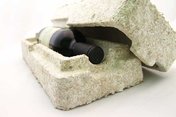 The furniture retailer is looking at using biodegradable mycelium "fungi packaging" as part of its efforts to reduce waste and increase recycling. It's no secret polystyrene is devastating to the environment. But, do you know how exactly that is so? According to a fact-sheet provided by Harvard, polystyrene - which is made from petroleum, a non-sustainable, non-renewable, heavily polluting and fast-disappearing commodity - is not biodegradable, as it takes thousands of years to break down. In addition, it is detrimental to wildlife that ingests it. Despite this well-known data, humans continue to toss more than 14 million tons of the stuff into landfills every year, according to the French ministry of ecology. Sadly, until every individual decided to "be the change" and live consciously, styrofoam pollution will continue to be a problem. In fact, it's already estimated that by 2050, 99% of birds on this planet will have plastic in their guts. This is unacceptable. Thankfully, the Swedish company Ikea clearly agrees. Aware of the environmental devastation polystyrene creates, the furniture retailer is looking to use the biodegradable mycelium "fungi packaging" as part of its efforts to reduce waste and increase recycling. The rest of this story can be read here. |
QUICK INFO
Author:
_Messenger Spirit This section is for interesting items which are brought to my attention but which do not merit a separate article.
I welcome your comments, questions or suggestions on any topics you wish to contribute to this section. Please submit these on the Contact and Feedback Form PLEASE DO NOT SUBMIT COMMENTS ON THE FORM WHICH APPEARS UNDER ITEMS ON 'QUICK INFO'; THIS SYSTEM IS NOT WORKING. Categories
All
Archives
July 2024
|
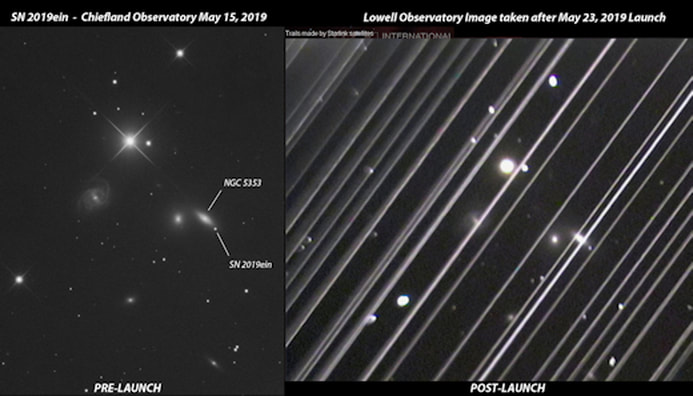
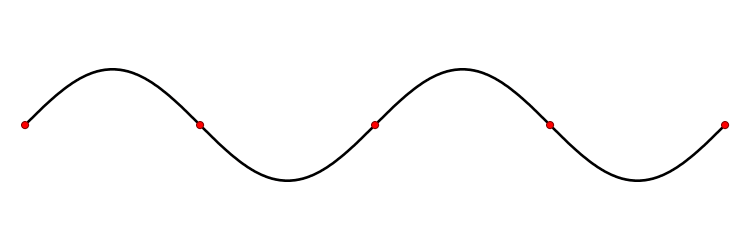
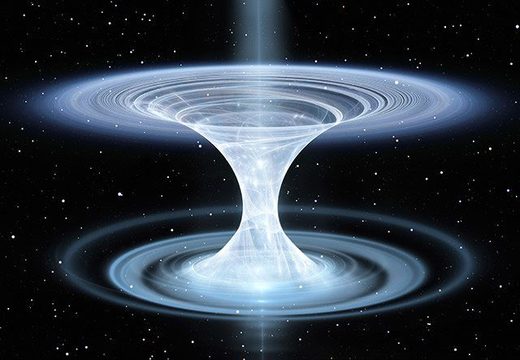

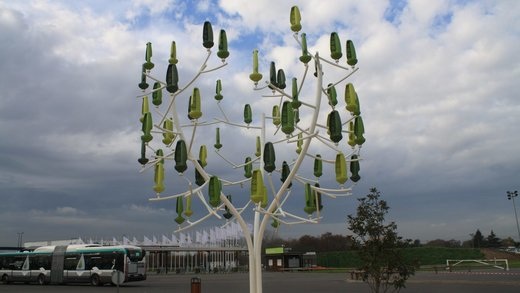
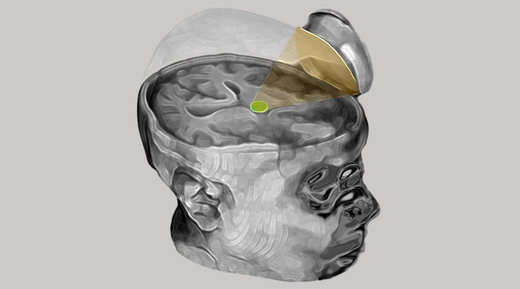


 RSS Feed
RSS Feed